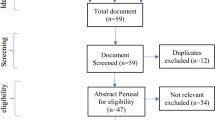Abstract
Ever since the disastrous floods of 1998, the Chinese government has used the Natural Forest Protection and Sloping Land Conversion Programs to promote afforestation and reforestation as means to reduce runoff, control erosion, and stabilize local livelihoods. These two ambitious programs have been reported as large-scale successes, contributing to an overall increase in China’s forest cover and to the stated goals of environmental stabilization. A small-scale field study at the project level of the implementation of these two programs in Baiwu Township, Yanyuan County, Sichuan, casts doubt upon the accuracy and reliability of these claims of success; ground observations revealed utter failure in some sites and only marginal success in others. Reasons for this discrepancy are posited as involving ecological, economic, and bureaucratic factors. Further research is suggested to determine whether these discrepancies are merely local aberrations or represent larger-scale failures in reforestation programs.
Similar content being viewed by others
References
Albers, Heidi, Scott Rozelle, and Li Guo. 1998. China’s forest under economic reform: Timber supplies, environmental protection, and rural resource access. Contemporary Economic Policy 16: 22–34.
Edmunds, David, and Eva Wollenberg. 2003. Local Forest Management: The Impacts of Devolution Policies. London: Earthscan Publications Ltd.
Elvin, Mark. 2004. The Retreat of the Elephants. New Haven and London: Yale University Press.
Harrell, Stevan n.d. An Ecohistory of the Baiwu Valley. Unpublished paper.
Harrell, Stevan, Bamo Qubumo, and Ma Erzi. 2000. Mountain Patterns: The Survival of Nuosu Culture in China. Seattle and London: University of Washington Press.
Hyde, William F., Brian Belcher, and Jintao Xu, ed. China’s Forest: Global Lessons from Market Reforms. Washington, DC: Resources for the Future, 2003.
Liu, Jianguo, Marc Linderman, Zhiyun Ouyang, Li An, Jian Yang, and Hemin Zhang. 2001. Ecological degradation in protected areas: the case of Wolong Nature Reserve for giant pandas. Science 292: 98–101.
Liu, S.L., B.J. Fu, Y.H. Lü and L.D. Chen. 2002. Effects of reforestation and deforestation on soil properties in humid mountainous areas: a case study in Wolong Nature Reserve, Sichuan province, China. Soil Use and Management 18: 376–380.
Sichuan Province Forestry Bureau. 2005, Untitled report on the Sloping Land Conversion Program in Sichuan. Chengdu.
State Forestry Administration 2004. A Report for Monitoring and Assessment of the Socio-economic Impacts of China’s Key Forestry Programs. Beijing: Ministry of Forests.
Tang, Ya, Jiasui Xie, and Hui Sun. 2004. Revisiting sustainable development of dry valleys in Hengduan Mountains Region. Journal of Mountain Science 1: 38–45.
Wang, Hongchang. 1999. Deforestation and desiccation in China: a preliminary study. Beijing: Center for Environment and Development, Chinese Academy of Social Sciences. Accessed 10/2/06 at http://www.library.utoronto.ca/pcs/state/chinaeco/forest.htm
Weyerhaeuser, Horst, Andreas Wilkes, and Fredrich Kahrl. 2005. Local impacts and responses to regional forest conservation and rehabilitation programs in China’s northwest Yunnan province. Agricultural Systems 85: 234–253.
Whiting, Susan H. 2001. Power and Wealth in Rural China: The Political Economy of Institutional Change. Cambridge: Cambridge University Press.
Winkler, Daniel. 2003. Forest Use and the Implications of the 1998 Logging Ban in the Tibetan Prefectures of Sichuan: Case Study on Forestry, Reforestation and NRFP in Litang County, Ganzi TAP, China. In: The Ecological Basis and Sustainable Management of Forest Resources (eds. Z. Jiang, M. Centritto, S. Liu & S. Zhang). Informatore Botanico Italiano 134 (Supplemento 2).
Winkler, Daniel. 2002. Participation in forestry in Tibetan southwest China: a strategy to resolve resource use conflicts. Mountain Research and Development 22: 397–399.
Xu, Jianchu and David Melick. 2007. Rethinking the effectiveness of public protected areas in southwestern China. Conservation Biology 21: 318–328.
Xu, Jintao, Runsheng Yin, Zhou Li, and Can Liu. 2006. China’s Ecological Rehabilitation: Unprecedented Efforts, Dramatic Impacts, and Requisite Policies. Ecological Economics 57(4): 595–607.
Xu, Zhigang, M. T. Bennett, Ran Tao, and Jintao Xu. 2004. China’s Sloping Land Conversion Program Four Years on: Current Situation and Pending Issues. International Forestry Review 6: 317–326.
Yang, Dali L. 1996. Calamity and Reform in China. Stanford: Stanford University Press.
Yang, Zisheng, Luohui Liang, Yansui Liu, and Yimei He. 2004. Land use change during 1960–2000 period and its ecoenvironmental effects in the middle and upper reaches of the Yangtze River: a case study of Yiliang County, Yunnan, China. Journal of Mountain Science 1: 250–263.
Zhang, Peichang, Guofan Shao, Guang Zhao, Dennis C Le Master, et al. China’s forest policy for the 21st century. 2000. Science 288: 2135–2137.
Zhang, Yuxing and Conghe Song. 2006. Impacts of afforestation, deforestation, and reforestation on forest cover in China from 1949 to 2003. Journal of Forestry Oct./Nov.: 383–387.
Zhu, Chunquan., Rodney Taylor, and Feng Guoqiang. 2004 China’s wood market, trade and the environment. Monmouth Junction: Science Press USA, 2004.
Author information
Authors and Affiliations
Corresponding author
Rights and permissions
About this article
Cite this article
Trac, C.J., Harrell, S., Hinckley, T.M. et al. Reforestation programs in Southwest China: Reported success, observed failure, and the reasons why. J. Mt. Sci. 4, 275–292 (2007). https://doi.org/10.1007/s11629-007-0275-1
Received:
Accepted:
Issue Date:
DOI: https://doi.org/10.1007/s11629-007-0275-1




